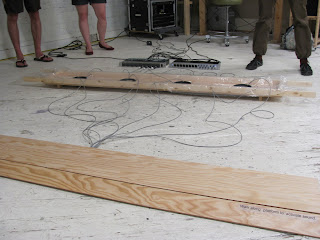


During our class with Ellen Moffat I explored the fifth floor of the Charter House Furniture building as well as its parking areas, alleys and shops surrounding the building.
Outside of the building I looked at the layout of the spaces, the in between the buildings, overgrown parking lots and an unused railway. The space seemed vacant, occupied only for fleeting moments of travel by the few stopping in the area so my loitering presence in the space attracting looks from others. Lacking participants, the space did not have opportunity for the social body to reflect their gender upon it. So does the space have a gender? Do spaces require occupants to hold a gender?



The unkempt nature that overwhelmed the neglected human made railway shows an urban overgrowth that is refreshing from the strong architectural lines of the groomed areas of the city, reflecting the lack of presence in the space. What does this tell us of the gender of the space, and how is the gender determined by the man made structures and the natural elements present in the space?
In terms of my presence as a female in the space I felt intimidated, on guard for others who may refute my existence there. While there was no masculine dominance in the space itself, it held potential for a masculine presence to overwhelm my feminine presence in the space. I would not call the space masculine, but I may label it antifeminine because of the lack of safety in the space, erasing the desire and acceptance to linger.



The architecture surrounding the area was dominantly designed for automobiles and felt impersonal, hard and cold. I felt this space to not only be genderless but to be completely neuter, void of both femininity and masculinity. With a few old warehouses still in use, most of the surrounding blocks are concrete foundations and walls greeting the passing pedestrian. From the flaneurs point of view the area is little more than topless tunnels directing traffic from building to building, windows and displays set too high for the pedestrian to engage. The space reflects the automobiles use of the space rather than pedestrian movement and like the unused back alleys directly surrounding the studio building, seems genderless because of the lack of occupants.
The interior of the building was very feminine due to the commercialization of the second floor into a furniture shop, but the fifth floor that held Moffat’s studio had a genderless space, the architecture from bare brick, concrete and plywood walls. As studios tend to do, it offered walls as blank canvas for creating work, but that blankness carried into the gender of the space. The space was tidy, white and like most warehouse studios I have encountered. This was reflected in Moffat’s Studio as well, her tidy piles of technology somehow remaining gender neutral in contrast to Tomas Begin’s technology at PAVED, which immediately struck me as masculine.
check out Ellens work at www.ellenmoffat.ca


